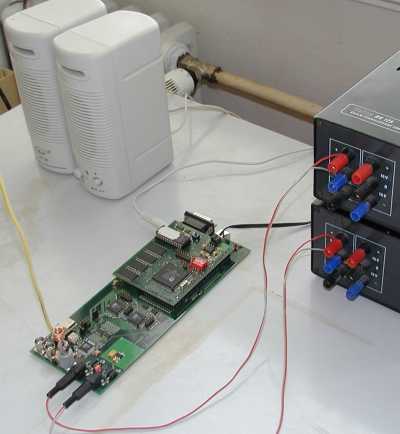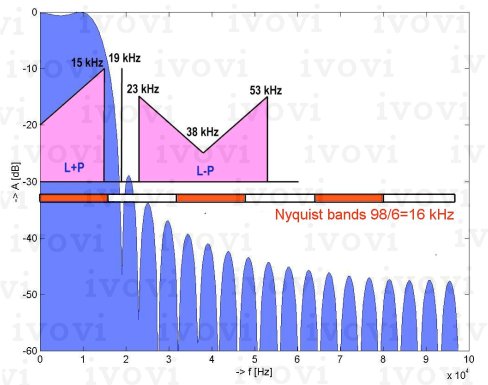
![[CNW:Counter]](http://counter.cnw.cz/melody.cgi?ivovidf&5&505060&FFFFFF&on)
Experimental digital FM receiver was presented at a seminar of Faculty of Electrical Engineering and Communication in May 2001.
This presentation was created to demonstrate possibilities of digital signal processing. The signal from a piece of wire antenna is filtered in a simple LC tank circuit to roughly select the FM radio band. Such signal is directly converted to digital domain by ADC and further processed digitally. It's important, that none analog active parts are utilised. Of course, signal is weak and only about 20 LSB's 'play-act' in 14-bit ADC full-scale, so the signal is about -60 dBFS. But this is sufficient to clearly play sound of at least four FM stations.
Digital receiver with simple BNC antena and embeded sigma-delta DAC 'plays the music' in PC speakers (left), 5V power supply (right).
The signal from the antenna is directly converted to digital domain by Analog-to-Digital Converter, transfered to baseband and filtered with a decimation by Digital-Down-Converter. The actual frequency is computed as the differential of actual phase, which is computed by CORDIC alghoritm in DSP. Low-pass filtered demodulated signal is converted back to analog domain by Digital-to-Analog Converter.
The audio frequency signal (mono) is picked out by the post-detection low-pass filter. The first zero of the filter (Kaiser) assures the suppression of 19 kHz pilot signal. Only every sixth sample is computed to match the DAC sampling rate.






